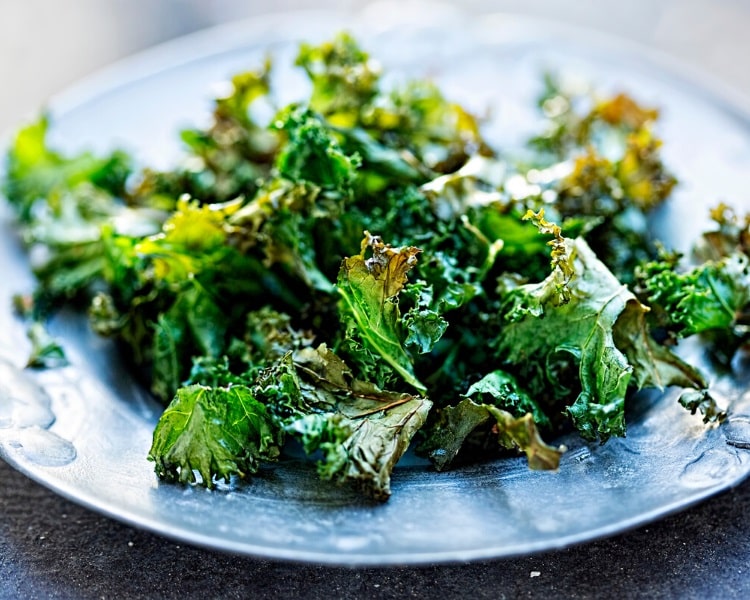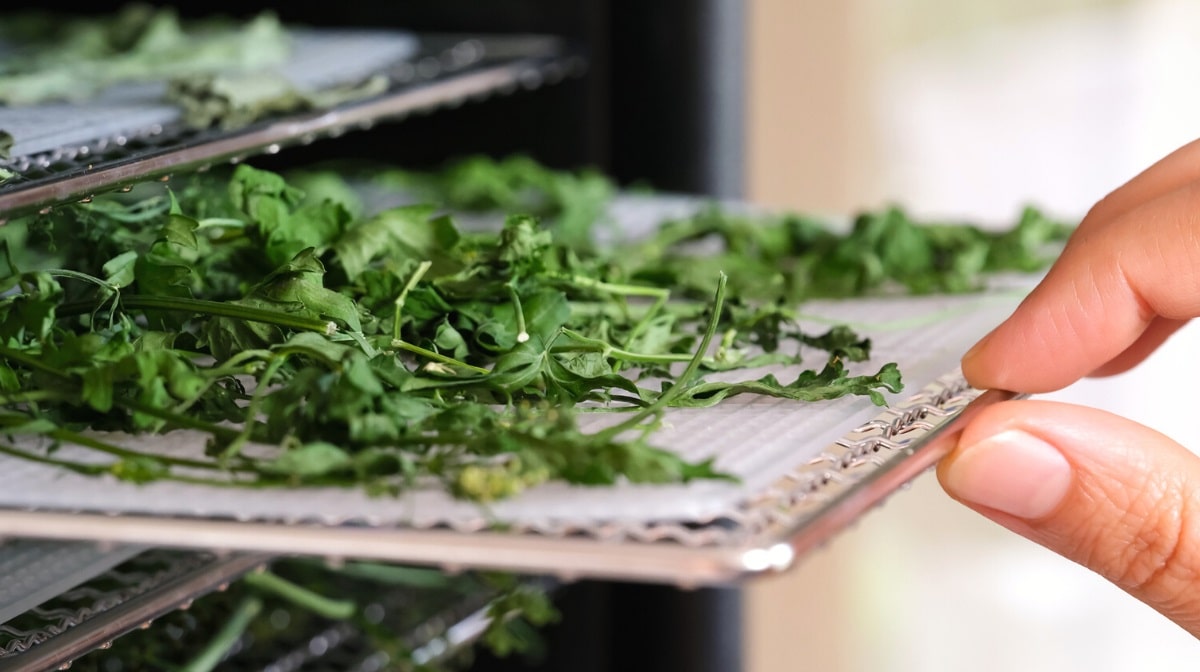I may earn a small commission from purchases made through product links on this website at no extra cost to you. As an Amazon Associate I earn from qualifying purchases.
Last updated: August 21, 2023
A food dehydrator can be a very useful and versatile kitchen appliance. But what exactly is it, and how can we best use one?
Food dehydrators may not be the most common appliance in people’s homes, but they can quickly become one’s best friend in the kitchen.
They are also very popular with people on a raw food diet because a food dehydrator can produce deliciously warm, crunchy snacks while still being raw.
In this article, I will be explaining what food dehydrators are and how you can best make use of them.
Quick navigation:
What Is a Food Dehydrator?
A dehydrator is a kitchen tool that uses low temperatures and a fan to dry food. In this process, water is essentially removed from the food, but the enzymes of that food remain.
I have to be honest here, though. I don’t think dehydrated foods are the easiest for your body to digest. There are reasons why most foods typically contain water, and one of them is to make digestion easier.

However, using a dehydrator to create snacks, for example, which are small food items, is perfectly fine. Dehydrated foods are also an excellent way for people to help transition to a raw food diet.
Many dehydrated foods can typically replace the textures and flavors of processed foods such as cookies, bread, and chips.
How to Dehydrate Raw Food?
Some dehydrators typically come with a temperature setting. As long as you are dehydrating raw foods at temperatures below 112-118F, your ingredients will still be considered raw.
While I always recommend people to consider investing in a blender before a dehydrator, dehydrators can actually be lots of fun.
Kale Chips
One fun way of making use of a food dehydrator is by making kale chips, yum!
Here’s a quick and easy recipe:
- 10 Kale leaves
- Sea salt (1 tbsp)
- Olive oil (2 tbsp)
- Diced garlic (optional)
- Lemon juice (optional)
Wash the kale leaves and cut them into smaller pieces. Just keep in mind that they will get smaller during the dehydration process.
Place the pieces of kale in a bowl and add the olive oil, sea salt, and diced garlic. Mix up the ingredients nicely into the kale.

Let the kale rest for a little while. Place the marinated kale on a dehydrator tray and turn the dehydrator on to dry for 7 hours at 115F.
Feel free to experiment with different ingredients and see what works best for you. Everyone has different taste buds!
Preserve Excess Produce
If you have an abundant garden, or if you always buy too many fruits and veggies (like me!) at the local supermarket, you can use a food dehydrator to preserve your goods.

Clean your fruits or vegetables, cut them into smaller chunks, place them on the dehydrator trays, and preserve them for later.
Dehydrated fruits and veggies are perfectly suitable as healthy afternoon snacks, or they can also be used to top salads or in soups and sauces.
Recommended Food Dehydrators
There are quite a few decent food dehydrators you can buy online, but I have good experiences with Excalibur and Magic Mill.
Excalibur
Depending on your budget, you can get a really good Excalibur dehydrator for a reasonable price. Excalibur is a well-known brand, and their products are very reliable and robust.
I’ve used my Excalibur Dehydrator for several years now, and I love having it to make crackers, breads, cookies, kale chips, and other dehydrated snacks.
- Large Capacity: Equipped with 9 easy-to-clean Excalibur dehydrator trays, this...
- Accurate Temperature Control: Features an adjustable thermostat with a range of...
- Low & Slow for Immune Boost: The perfect dehydrator for food and jerky, dried...
Magic Mill
If you’re just starting out with dehydrating food, there are certainly less expensive models available, either online or at most kitchen warehouses.
This Magic Mill Food Dehydrator on Amazon is an excellent machine that is also very affordable.
- REAR MOUNT FAN FOR SUPERIOR HEAT DISTRIBUTION – DRIES FOOD EVENLY The electric...
- DIGITAL THERMOSTAT AND TIMER- AUTOMATIC SHUT OFF WHEN TIMER DONE -- An...
- SPACIOUS ADJUSTABLE STAINLESS STEEL TRAYS – INCLUDED FRUIT ROLL TRAYS! Use the...
How to Dehydrate Food Without a Dehydrator?
What if you don’t want to invest in another kitchen tool but still want to dehydrate food every now and then? Totally understandable.
There are definitely other ways to make yourself a bunch of dehydrated snacks and crackers. Let’s go through some of these alternative methods.
1. Oven
Most kitchens nowadays will have an oven, so the oven is the first thing to try when you want to experiment with dehydrating foods.
If you’re on a raw food diet, keep in mind that when using an oven, it may not end up with a completely raw product in the end.
Start your oven on the lowest possible setting. Place the foods you want to have dehydrated in a non-stick oven-ready pan. Place the pan in the oven and keep the door open. Use a fan if you have one, to keep the air flowing so that there is no condensation.
Dehydrating with an oven will probably take half the time it takes with a real food dehydrator; keep that in mind.
2. Sun Dry
If you live in a warm climate or happen to have a big sunny window, you can try and sun dry your ingredients.
It’s hard to measure temperature this way, so it requires a bit of practice. But keep in mind that the sun can easily make things quite hot.
3. Mini-Toaster Oven
The process is similar to what you would do with a regular oven.
Place the foods you want to dehydrate on a plate or sheet in your mini-toaster oven. Set it on the lowest possible setting, and keep the door slightly open.
Use a small fan in front of the oven, if you have one, to avoid water condensation. This also speeds up the dehydrating process and makes sure your food won’t get soggy.
The dehydrating time will be shorter than with a regular food dehydrator, so make sure you check up on the food regularly.



